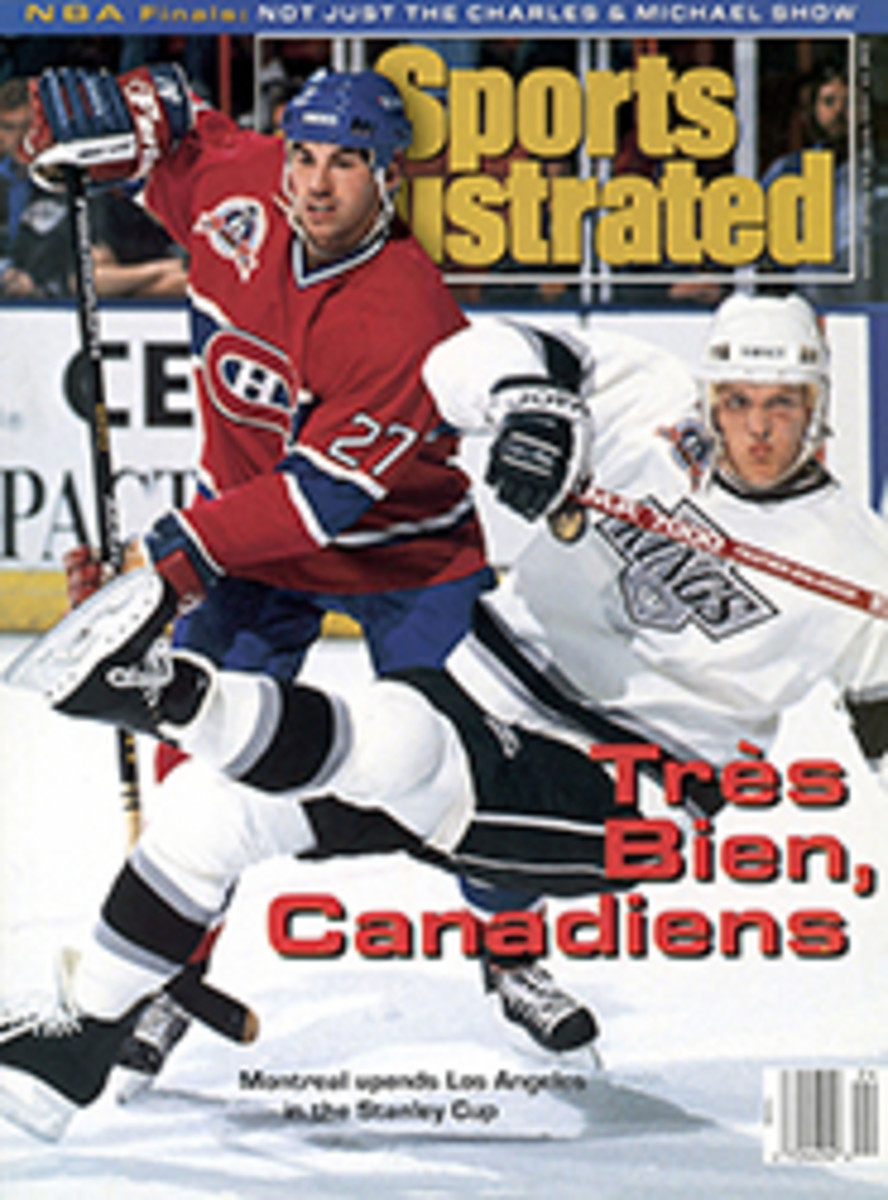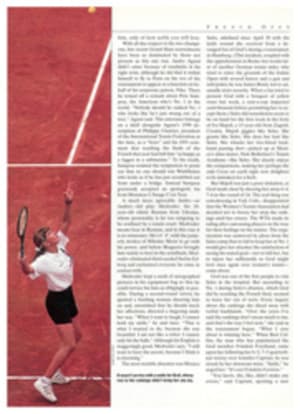
Gently down the Stream?
Picture this: you're in a Kayak, tearing down a mountain stream, when suddenly your kayak shoots between two rocks. You're holding your paddle across your chest, but the 80-inch double-bladed paddle, which resembles a giant wooden Q-Tip, is some eight inches too long to make it through the gap between the rocks. The ends of the paddle grab both boulders in a hearty hug, then the handle slams against your body and you become a contestant in a spontaneous limbo festival. If you don't squeeze under the paddle, you can count on your sternum—or chin, nose or throat—crashing into the wooden handle. You then will negotiate the rest of the run while unconscious, your dangling torso doing a slow hula as the churning current stirs your senseless body around the cockpit.
Or something like that.
The Q-Tip must go. That, at least, was the conclusion drawn three years ago by R. Scott Murray, 25, of Plymouth, N.H., while he was driving home after a grueling run on a nearby river. He resolved that afternoon to come up with a paddle that would be safer and less stressful on his chronically sore elbows and shoulders.
The result, after much tinkering, is the Wiggly Stick, which is four to eight inches shorter than the traditional paddle and resembles the cushioned jousting rods used by combatants on American Gladiator. Although Murray used the standard wooden paddle blades in his design, he experimented with different materials for the handle, finally settling on a fiberglass section cut from a vaulting pole. The fiberglass bends up to 40 degrees, which means that even if the paddle gets trapped between boulders, the handle won't break. In the summer of 1990 he approached USC Spirit, a pole manufacturer in Carson City, Nev., with his design. Two weeks later, with the company's help, Murray had his first prototype.
As he had hoped, the paddle's handle didn't break when it snagged between two rocks. It bent until it reached its maximum torque; then it sprang back like a catapult, sending the paddle whipping into the air. "When the handle bent and bent and bent, and then you finally let it go, the paddle took off, vibrating enough to make a helicopter sound," he says.
The other benefit of the fiberglass handle was equally important. "The return on your stroke is better," Murray says, "and it's easier on your back and shoulders. Paddling with a stiff paddle puts a lot of strain on your muscles. With the Wiggly Stick, the motion is more fluid. You avoid the quick contractions and some of the bangs and bumps that really jar you."
Murray bought some fiberglass poles from USC Spirit and had a friend, Dave Mitchell of Mitchell Paddles in Canaan, N.H., make the blades and help with the assembly. Murray promptly sold five paddles to kayakers who had lower-back troubles or chronically sore shoulders. After using the Wiggly Sticks, all five reported considerably less muscle soreness at the end of a full day of kayaking.
Murray is determined to keep his paddle affordable. It sells for $180 and can be bought by writing to Wiggly Stick at R.R. No. 4, Box 1076, Plymouth, N.H., 03264. Murray has no marketing strategy beyond showing the paddle at popular river sites and at kayakers' conventions, where people can test it.
"It's a curiosity," he says. "Kayakers see it and think it's pretty neat. The composite materials are usually black, so it contrasts with the typical white paddles in regattas. You look a bit like Darth Vader in a canoe."
Whether the Wiggly Stick ever makes any money for Murray is almost beside the point to him. He says he makes a living playing the stock market, and he spends as much time as possible skiing, kayaking or mountain biking. This spring he took a leave from his studies at Plymouth State College to ski in Colorado. He then went up to Quebec's Gaspè Bay, where he and some friends ran several rivers not yet charted by kayakers. Murray is happiest outdoors, but if the Wiggly Stick becomes popular, he may be forced to settle down and become the unthinkable—a businessman.
"I heard someone say that people try to build a roof over you every year of your life," he says. "Each season a few more shingles are nailed into place. Pretty soon you're living underneath a skylight, like a potted plant. That wouldn't be for me."
PHOTO
SCOTT UNDERHILL
Murray prefers using his paddle to marketing it.
Joseph Monninger has written a number of stories for Sports Illustrated.

